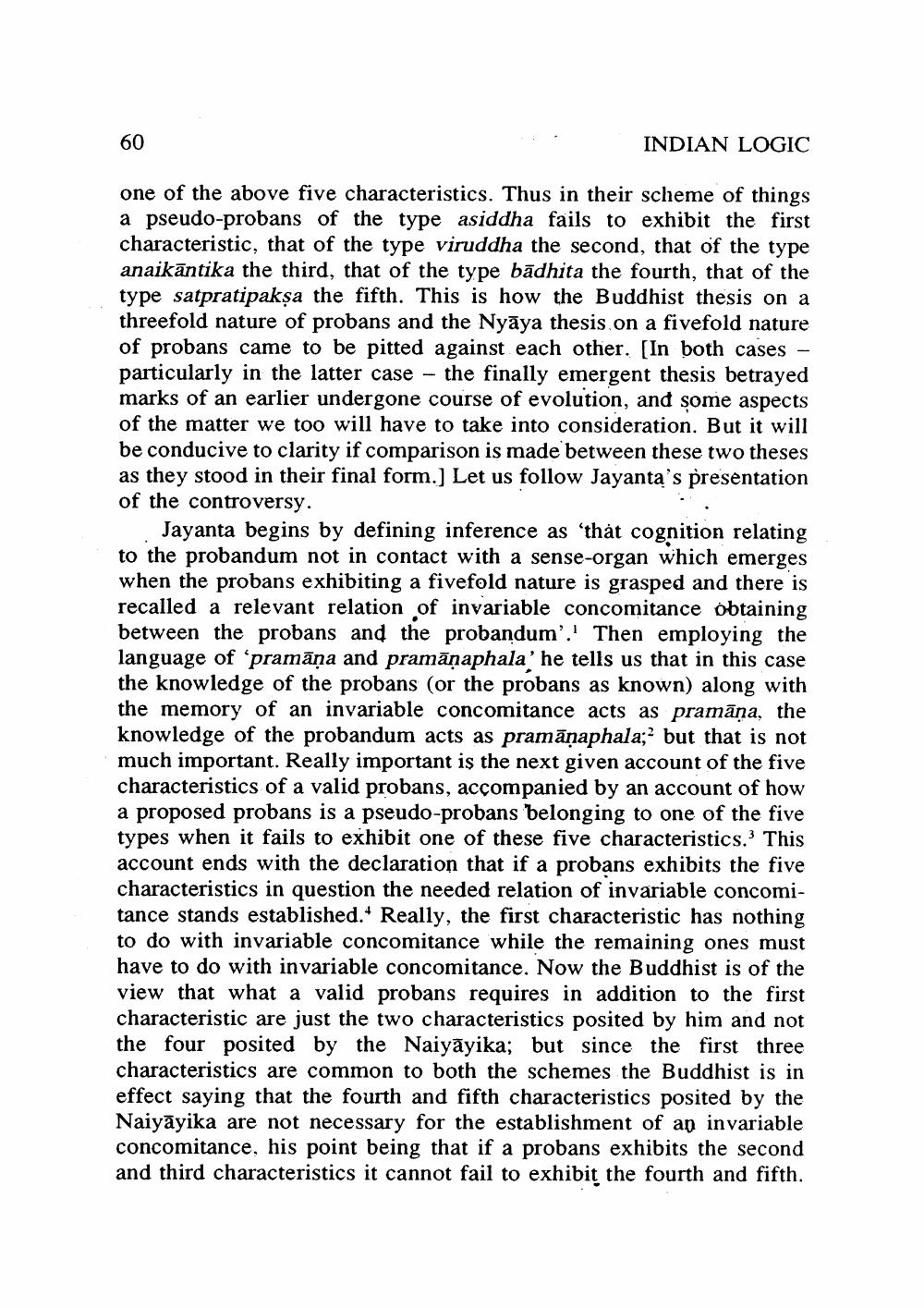________________
60
INDIAN LOGIC
one of the above five characteristics. Thus in their scheme of things a pseudo-probans of the type asiddha fails to exhibit the first characteristic, that of the type viruddha the second, that of the type anaikāntika the third, that of the type bādhita the fourth, that of the type satpratipaksa the fifth. This is how the Buddhist thesis on a threefold nature of probans and the Nyāya thesis on a fivefold nature of probans came to be pitted against each other. (In both cases - particularly in the latter case – the finally emergent thesis betrayed marks of an earlier undergone course of evolution, and some aspects of the matter we too will have to take into consideration. But it will be conducive to clarity if comparison is made between these two theses as they stood in their final form.] Let us follow Jayanta's presentation of the controversy.
Jayanta begins by defining inference as 'that cognition relating to the probandum not in contact with a sense-organ which emerges when the probans exhibiting a fivefold nature is grasped and there is recalled a relevant relation of invariable concomitance obtaining between the probans and the probandum'.' Then employing the language of 'pramāna and pramānaphala' he tells us that in this case the knowledge of the probans (or the probans as known) along with the memory of an invariable concomitance acts as pramāna, the knowledge of the probandum acts as pramānaphala;- but that is not much important. Really important is the next given account of the five characteristics of a valid probans, accompanied by an account of how a proposed probans is a pseudo-probans belonging to one of the five types when it fails to exhibit one of these five characteristics. This account ends with the declaration that if a probans exhibits the five characteristics in question the needed relation of invariable concomitance stands established. Really, the first characteristic has nothing to do with invariable concomitance while the remaining ones must have to do with invariable concomitance. Now the Buddhist is of the view that what a valid probans requires in addition to the first characteristic are just the two characteristics posited by him and not the four posited by the Naiyāyika; but since the first three characteristics are common to both the schemes the Buddhist is in effect saying that the fourth and fifth characteristics posited by the Naiyāyika are not necessary for the establishment of an invariable concomitance, his point being that if a probans exhibits the second and third characteristics it cannot fail to exhibit the fourth and fifth.




